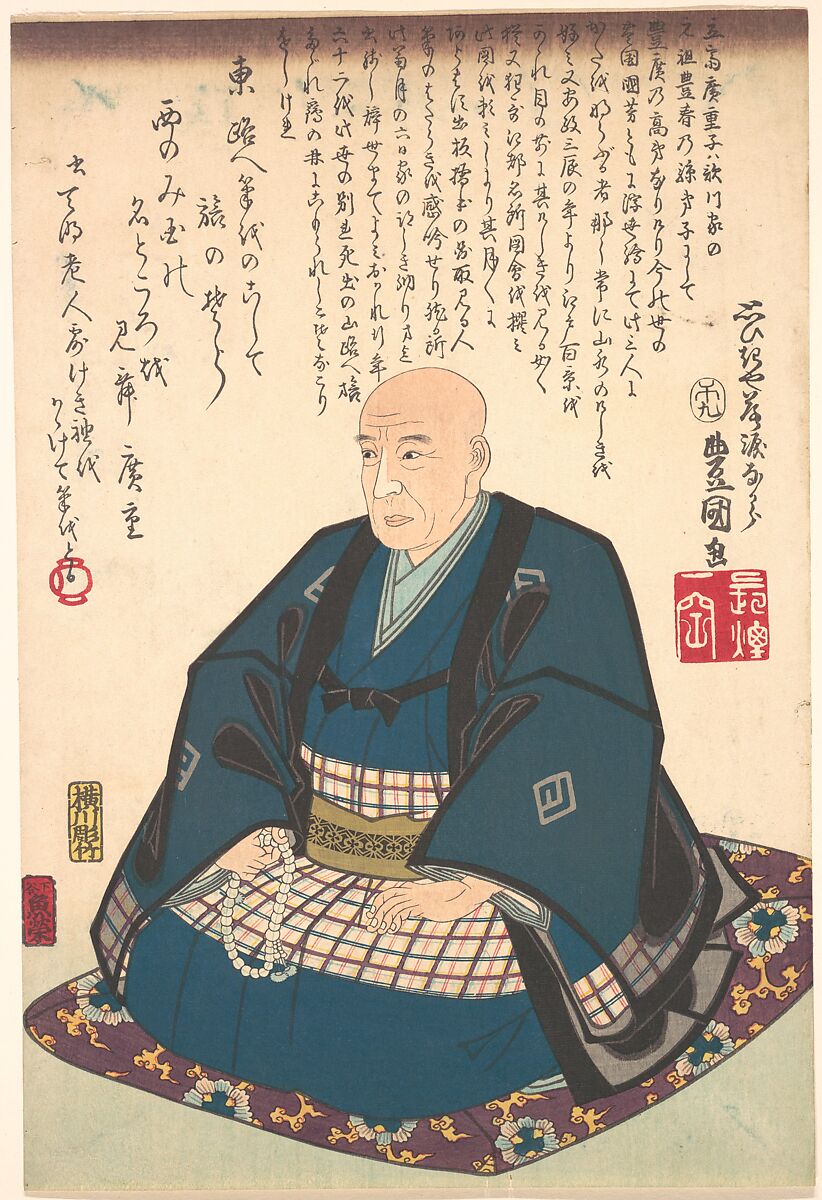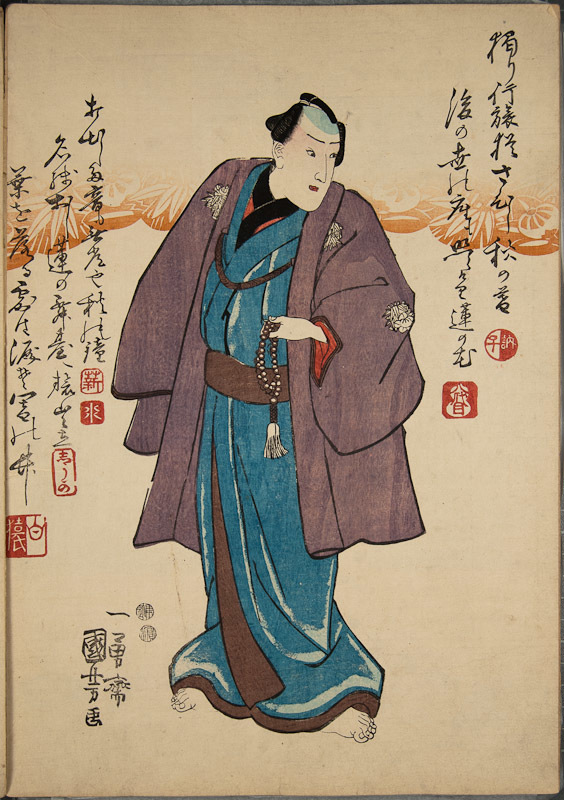How can the term shinie be defined?
The specialist HIDAKA Kaori defines shinie as a Japanese colour print produced to announce the death of a kabuki actor and honour their memory, and that were printed between the second half of the Edo period (1615-1868) and the beginning of the Shōwa period (1926-1989).
It could be translated as “funerary memorial portrait”.
The term tsuizene (追善絵) or commemorative picture, commonly used until the introduction of the term shinie in the mid-19th century, proves that earlier single sheet prints were also produced for distribution as keepsakes of these special occasions.
Sometimes this practice was also extended to honor other artists involved in kabuki theater performances, such as reciters or gidayū (義太夫).
Over time, this type of engraving was also used to pay tribute to the artists who were responsible for the prints’ colorful designs, and examples paying tribute to Utagawa Toyokuni, Utagawa Kuniyoshi or Utagawa Toyokuni III have reached us.
In the case of prints commemorating designers, these were usually done by a person close to them, such as a disciple.
This engraving presents the actor in an iconography typical of the shinie genre: standing in the center, dressed in bluish, violet and/or gray colors, surrounded by laudatory or death-related texts. In this case, the texts belong to five different people.

